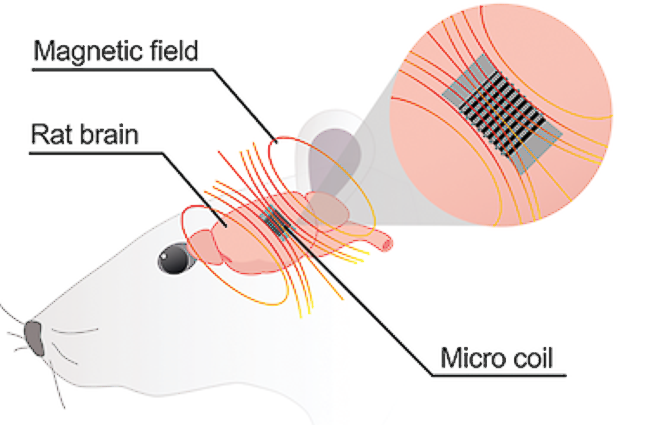
From: McGlynn et al., “The Future of Neuroscience: Flexible and Wireless Implantable Neural Electronics”, 2021
Many years ago I built a magnetic nerve stimulator that dumped a large bank of capacitors (2,100 μF) charged to 1,350V into a coil of very hefty litz wire. rTMS devices, which stimulate the brain with similar magnetic pulses at a frequency of around 10Hz require water-cooled coils.
Based on this experience, I wouldn’t have thought that magnetic stimulation could be scaled into something that could be implanted. I was thus very surprised when someone mentioned to me at NANS 2025 that he’s working on “micromagnetic stimulation” (μMS).
That piqued my interest, and I’m a bit embarrassed to admit that I have somehow missed all of the IEEE papers that have been published on neural stimulation of the brain, retina, spinal cord, and peripheral nerves using implanted microcoils.
The main advantages of μMS over electrical stimulation using implanted electrodes are that it can provide very accurate stimulation, is not prone to electrochemical damage of tissue, and can work through scar tissue.
However, power and heat still seem to be difficult technical impediments to μMS replacing conventional electrical stimulation in fully implantable applications.
Here are a few references that I found interesting:
- Tiny Implantable “Microcoils” in the Brain Activate Neurons Via Magnetic Fields.
- Solenoidal Micromagnetic Stimulation Enables Activation of Axons With Specific Orientation
- Portable Arbitrary Pulse Generator for Driving Microcoils for Micromagnetic Neurostimulation
- Micromagnetic Stimulation (μMS) Dose-Response of the Rat Sciatic Nerve
